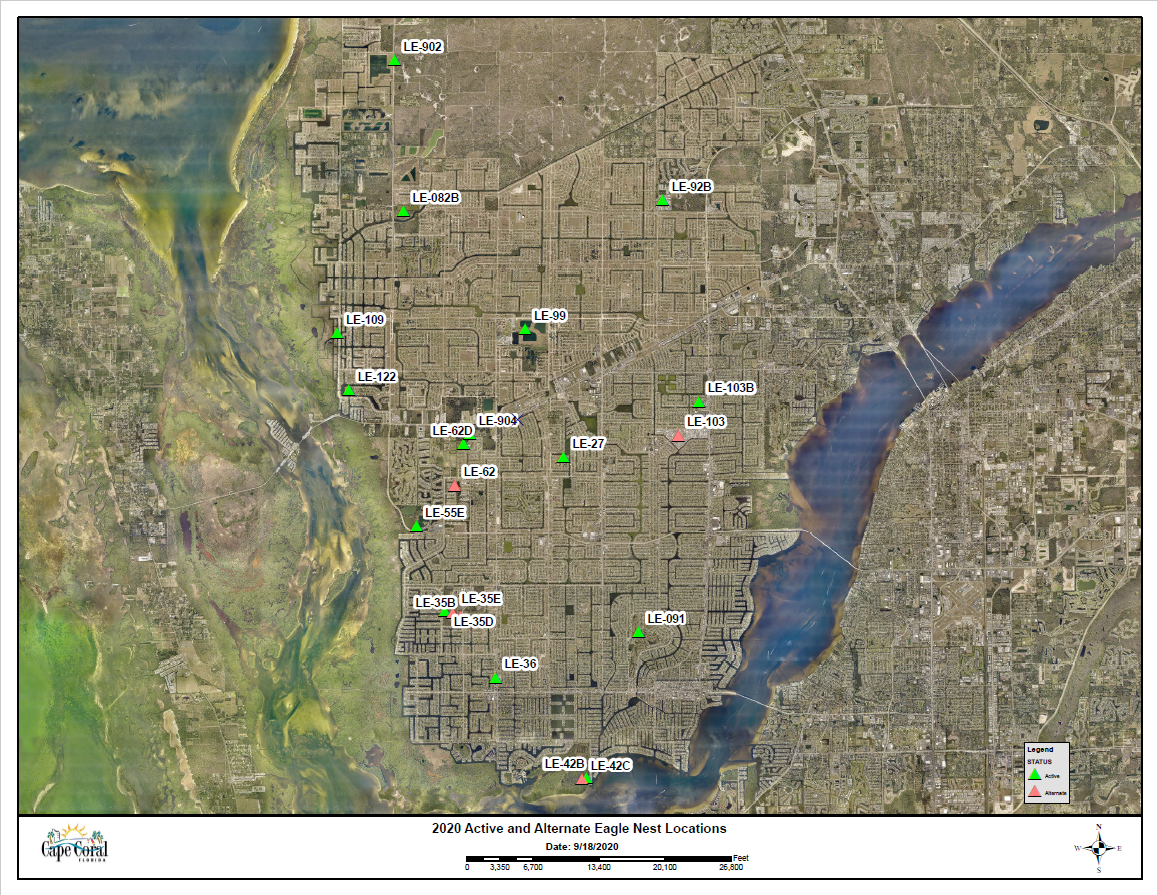We are fortunate to have a buzzing wildlife here in Cape Coral, Florida. There are many species of endangered birds and reptiles that thrive in our estuary rich environment. One of those, the coveted Bald Eagle is very well known around the country and has called our area home for years. The Florida Fish and Wildlife Conservation Commission has classified the Bald Eagle as a threatened species and with this protection, the population has grown over the years.
Active and Alternate Nest Locations
Many precautions have been put into place to further the population. One of those is a protection order placed around their active and alternate nests around the city. (See map below.) Land deemed essential to the feeding, sheltering or other vital behavior patterns to the Eagle during their breeding season, which runs October 1st through May 15th, is monitored closely by the city.
What Does That Mean for Construction?
With the increased population of the Eagles, there has been an increase in nests. Jumping to 20 as of 9/18, that have been marked and listed with the City of Cape Coral. The area around these nests, called Eagle Nest Management Zones, comes with restrictions on development as to not disturb their nesting season. A buffer area consisting of 1,100 feet of the active nest in all directions. (Click to view LE-122 – Radius Zone map below.)
In this buffer area no heavy construction activities resulting in large amounts of noise, or land vibration is permitted without an Eagle Management Plan.
If construction on a property in the buffer area is substantially complete prior to the nesting season, a permit can be obtained to allow light construction on the property. However, this only pertains to the primary structure, not accessory structures like pools, seawalls, or docks.
Eagle Management Plan
An Eagle Management Plan must be prepared by a qualified expert with knowledge in the biology of the Bald Eagle. This plan is then reviewed by the Department of Community Development to ensure it provides safeguards to prevent any disruptions to the Bald Eagle. Reviewers look at the proximity to the nest as well as the scope of work of the development to the property. These plans are monitored, and reports are required to inform the City on the condition of the Eagles’ habitat. These types of plans can be costly, and violations in anyway to the plan can include hefty fines and even imprisonment.
Conclusion
If you are in the process of acquiring a lot to build on, its good practice to check on any building restrictions that may be attached to the lot. Restrictions can be worked around like the above-mentioned Eagle Management Plan implantation if you are in an Eagle zone. However, knowledge of these restrictions prior to acquisition can help determine unforeseen costs and delays.
For additional information on protected species and researching restrictions on properties in Cape Coral by address, please reference the links below.
Chapter 23 – Protected Species Document
Research restrictions by lot address here:
https://capegis.maps.arcgis.com/apps/webappviewer/index.html?id=bbce9a471a534e7482d35716c4cb6f36

